DotNext 2018 Piter Release Notes
On April 22-23, DotNext 2018 Piter will be held in St. Petersburg - our next big .NET conference.
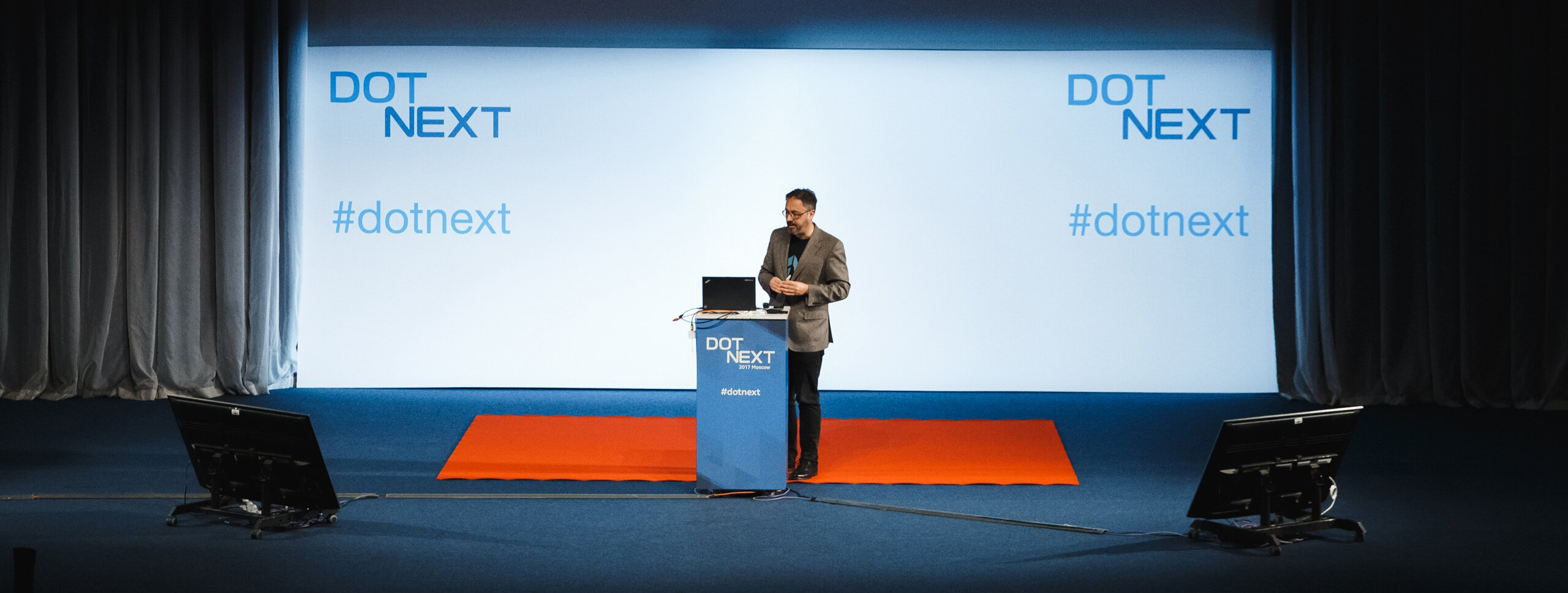
The development of the conference is very similar to the development of a software platform. Our languages and dynamic runtime constantly compete with each other: for example, Java is chasing .NET by the syntax of the main language, and .NET is trying to catch up with Java by cross-platform.
IDE for our platforms evolve more directly. Provide an update to Rider , one of the core IDEs for .NET, built on the basis of the IntelliJ Platform . Every time a base platform gets the update, all related projects are updated. Theoretically, if the PSI mechanism is improved, the upgrade will be not only for Rider, but also for IntelliJ IDEA, the most popular IDE for Java. But some features may require additional dopilivaniya.
Our conferences are even better. Every time an update is received by the main .NET conference (DotNext) or the main Java conference (Joker), the updates are distributed across all products completely cross-platform.
If in DotNext we introduce additional mechanics of social interaction of the conference participants, then Joker will use them in the future. If we improve the quality of the picture up to 1440p in the recording and live broadcast of the JPoint and add the ability to simultaneously see the speaker and slides, this feature gets DotNext. Proper platform architecture is key to success.
Interestingly, by participating in a conference on one of the sides, you will fall directly into this rapid flow of continuously evolving technologies. You can see how the speakers (if they are from Microsoft or Oracle) talk about new products made to get closer to each other. You listen to how the heroes from JetBrains try to sit on two chairs (in fact, there are more chairs). And you can watch over and over again as your favorite conference evolves with them, getting new features and honing old ones to a mirror shine.
Let's see what new features are waiting for us in 2018.
Changelog. DotNext 2017 Moscow → DotNext 2018 Piter
We are able to do cool conferences, but just cool conferences are no longer exciting. We carefully analyzed feedback, and this time we decided to focus on engaging the participants in active interaction: so that people would talk, ask questions, suggest their own topics and solutions, and so on. How are we going to do this?
There will be good new reports that are interesting to discuss. Everything is clear: they were, are and will be, this is the essence of our conferences. In addition to them, there are several other important things.
First, the discussion areas . If you have not been with us, then the next couple of paragraphs is a small course of a young fighter of discussion zones.
Usually the questions after the report are tightly limited in time: there are a few minutes, and then you have to empty the hall. In our case, the matter is not limited to this: each speaker after the performance moves to a specially designated zone, where interested listeners can continue to communicate with him for much longer.
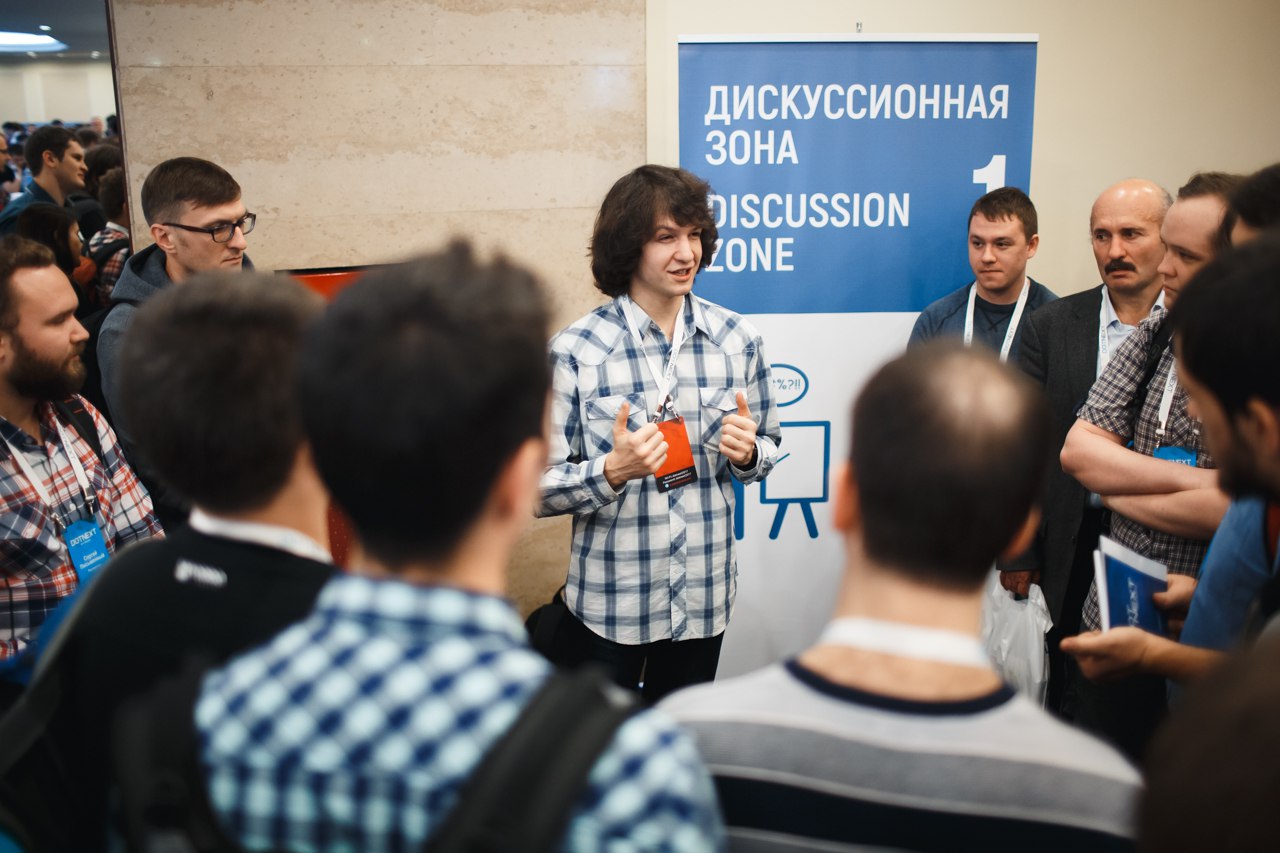
Discussion zones are your instrument as a listener. They need to be able to use, and not just wait for the weather by the sea. Upon learning of the presence of a discussion area, people think: “Okay, I can always ask my question.” No, often wanting too much. You can not have time to find out from the speaker all that you need in the allotted hour. Even if the speaker voluntarily decided to stay for a long time, if this is a very important person in the community, the crowd around him may not disappear for hours. If the speaker is “interrogated” for an unnecessarily long time, he may simply burn out, and you will never ask your question. In addition, the discussion may go into an uninteresting direction to you - so you need to actively participate in its formation. Raise topics of interest to you, come closer. Often, discussion areas are located where there are many people, plus an impressive crowd gathers around the speaker. If you stand too far, you will hear very poorly, do not ask a question from far away and do not connect to the conversation. To be honest, you should always break through to the first row - in the second row audibility is worse. Ask questions in the Telegram channel of the conference - the speakers themselves use it and read what you write there.
A few words about the Telegram channel. He is, and really is read. Moreover, when the report is completed and it is time to ask questions, the trackunners read selected questions from Telegram.
Secondly, communication between the participants . Why is this so much attention paid to? Often we get feedback like: “ I went for two days, no one communicates with me, I don’t know how to approach people - it will look silly, what should I do?” Therefore, we decided to help establish communication outside the discussion zones. Of course, there will be a party, our speakers want to speak - Dylan Beatty and Vagif. In Moscow, it was like this, and everyone enjoyed it very much:

Thirdly, there will be a round table . We were afraid of round tables for a very long time, deliberately did not include them in the program - few of whom do it well. There was even an opinion that it is easier to make an empty slot than a round table. But the very first attempts showed that this was wonderful for us. Last time at DotNext there was an especially good round table, and it seems to us, that’s why: a great moderator, excellent experts, and, most importantly, a friendly audience asking interesting questions. By the way, there were several questions from Telegram.
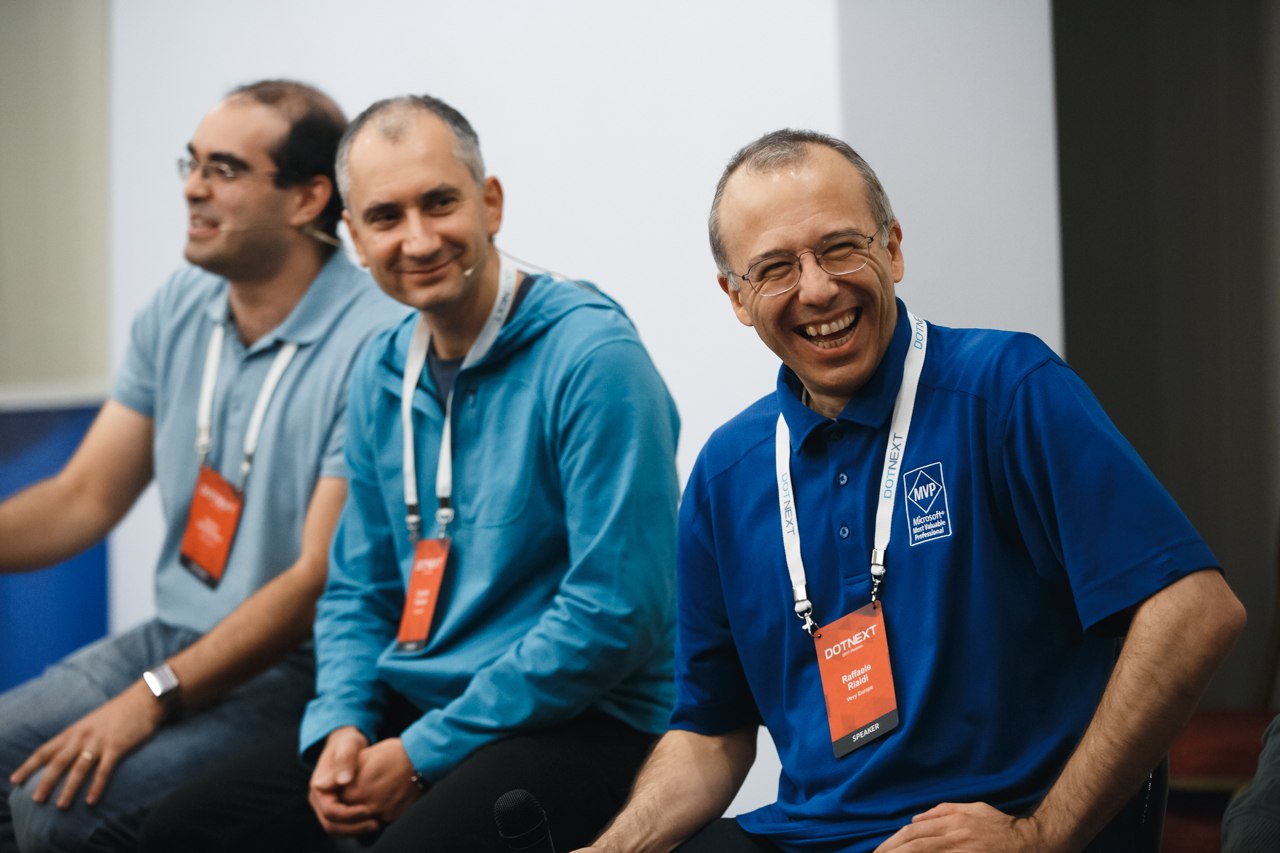
You have the opportunity to influence the topic of the round table right now. Write your topic (or any other suggestions) in the comments, and we will take into account your wishes when creating the program.
Fourth: there will be an open microphone . This is a new practice for us, which consists in the following: the program has one free slot, which can be filled with any report and any topic. In the morning, a flipchart appears in the lobby, marked by a grid of various topics. Any participant can, with the help of a sticker lying next to a flipchart, mark a topic that is most interesting to him. Just stick a sticker in the square with the desired topic. A theme that will get more stickers and take up a free slot. Perhaps, we will change something closer to the conference, but the general meaning is as follows.
There are other options for organizing an open microphone, but they are quite complex. For example, in the morning, put up a few boards and give the speakers the opportunity to write their own topics on them, such as: “I want to tell you about .NET Core 3.0”. After lunch, the second phase begins: the listeners look at these topics and also note the ones they like most with stickers. The third phase: the moderators analyze the themes and stickers, and form the program of the next day in one separate room from the top themes. Unfortunately, according to world practice, this format is not the most successful, for success it requires serious refinement and improvement. Therefore, they don’t do this anywhere in Russia, and we haven’t done it yet, and we’ll not do it on DotNext 2018 Piter .
For a change, let's talk about the practice, which is everywhere, but we do not have it, because it does not work. At overseas conferences they put tables with a designated theme: for example, on the table there is a piece of paper with the inscription “.NET Core” . It is assumed that people at the break will gather around such a table and discuss. NET Core. In fact, it does not work. People talk about anything other than the “table theme” - about cars, about snow on the street, about politics ... As a result, there are those who have nowhere else to sit. Poorly somehow, yes?
How will people find each other? We in the JUG.ru Group thought about it, thought, and did not even think of anything.
Harabozhiteli gentlemen! Help advice! How do you want to find each other? Maybe we should write some mobile application for you? Speed dating arrange? :) Which formats do you think really work? Write in the comments! Now is the moment when with your comment you can really change something for the better.
The nature of the report: "smoothie", "bearded", "hardcore".
Studying the conference program, you will see in front of each report a pictograph - “smoothies”, “bearded” and “hardcore”.

Many people misinterpret this as “the complexity of the report’s topic” and as a result go to inappropriate reports.
One of the best things that you can do with this habrapostam is to explain the true meaning of the notation.
“Smoothies” is a report for which you do not need to have in-depth knowledge of the topic of discussion. Everything you need is reported in the course of the report. For example, the listener may work for a long time with the framework, but does not have deep knowledge in some aspect of it. In the course of the report on this aspect will tell everything. Despite the fact that such a topic is complex, all the necessary information for its understanding is fully explained by the speaker.
"Bearded" - this is a report for which you need to have experience working with technology. These reports are designed for practicing engineers who know a lot about the topic under discussion, so there is no need to waste time on trivial matters such as explaining terminology and typical ways of doing things. Here is a concentrated information.
- “Hardcore” are reports that require a remarkable understanding of the topic. You do not need to explain anything - you yourself know the background of the problem as well as the speaker. The speaker immediately takes the bull by the horns and conveys information from the very front of the struggle with the problem. For example, material about low-level optimizations often falls into this category: reports by some professional performers for other professional performers. Attempting to fully describe the context of the problem would stretch over many days. This does not mean that the topic is complex in itself - it means the way the speaker conveys the report material.
Now - footnotes with an asterisk * , as it happens in contracts.
It happens that some reports are “hardcore”, but for some reason they stand under the “bearded”, and vice versa. There is still such a thing as a method of filing. Some speakers have incredibly interesting content, but it is very difficult to serve it. For example, the speaker decided in a relatively simple topic to bump into the mathematical proof of some statement, and hardcore arises simply because he decided to explain himself in this way. Nevertheless, his proof is important, and asking the speaker to throw this piece away is meaningless.
And there are speakers who come up with interesting ways and hacks, how to explain complex things in the simplest possible way. For example, it seems to me that Sasha Goldstein knows how to choose words so that complex things do not seem to be so hardcore. Although his reports are almost always labeled “goat” in our country, this corresponds to their true level.
A separate question - puzzlers. On the one hand, puzzlers are fun and fun, and even unprepared listeners can come there. But it turns out that by the nature of the report, puzzlers are either “bearded” or “hardcore”. If a person came there just to have fun, and really does not practice anything, absolutely all of the content of the report will pass him.
You can also tell about the fourth category of reports, which we never have - marketing and product placement-reports. In world practice, it is customary to clearly indicate such reports in the program: it should be immediately obvious that this is so that you buy or start practicing something the speaker needs. But we do not have such reports - and this is the key feature of our conference. No marketing bullshit, only really interesting, useful and relevant material. But overseas product placement reports are common, and this explodes the brain of a morally unprepared listener.
Program
Regarding the content of the new DotNext 2018 Piter . It will still be fiery, and about ten reports are being prepared right now.
I will not copy the whole program to Habr, but I will redirect to the appropriate page on the official conference site . Moreover, this page is now rapidly changing, reflecting the registration of new speakers and work on the program.
Instead, a couple of words about the preparation. Many world-class speakers can bring with them several new products, but have not yet decided on the choice.
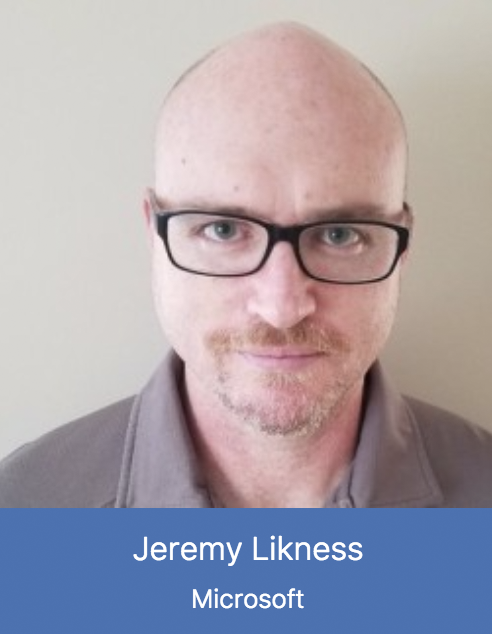
For example, Jeremy Likness. On the one hand, he can take the topic “Going Serverless with .NET”, which is quite obvious to him, by telling how an overheadless serverless platform can be overcome with the help of proper event handling (HTTP requests, timers, file downloads, etc.) . He told us about cross-platform development on C # and using many popular words like IaaS, PaaS, SaaS, Serverless, Azure Functions, Azure Logic Apps, Azure AppInsights.
On the other hand, it can also tell about CosmosDB - the documentary NoSQL-database, with which you can start working in the paradigm of serverless data. Geo-replication and understandable latency are included, and more - the choice of API to taste and support DocumentDB, MongoDB, Gremlin, Table Storage, Cassandra. All this with live coding and demos.
The first report is frankly useful, the second is unusual; choosing one of them is the headache of the Program Committee. As the witcher Geralt from Rivia said about the choice of two evils: “The smaller, the bigger, the middle — everything is one, the proportions are conditional, and the boundaries are blurred. I am not a holy hermit, not only one good did in life. But if you have to choose between one evil and another, I prefer not to choose at all . ” The Program Committee has a more complicated problem: first, they need to choose one of two excellent reports in advance. Secondly, it is necessary to choose, because there will be a large number of stellar speakers on DotNext 2018 Piter , and packing them in just two days is not an easy task.
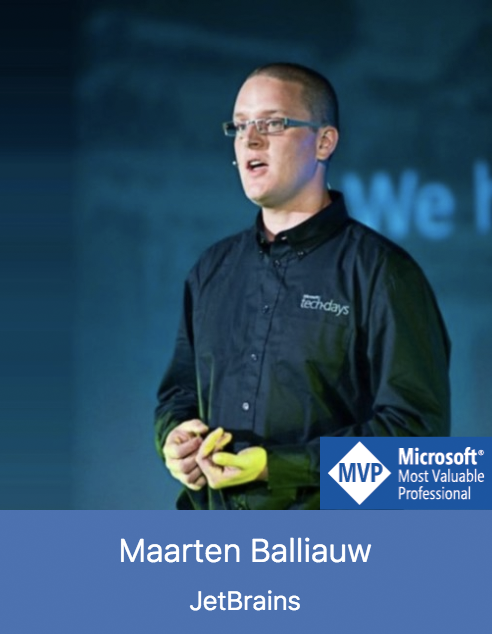
Jeremy is not the only person with two reports. For example, Maarten Balliauw (founder of MyGet.org and developer advocate at JetBrains) can talk about both application diagnostics for Azure and DNS. Again this choice: we all do cloud applications, and the topic of semantic logging for Azure and things like AppInsights and AppInsights Analytics are more relevant than ever. On the other hand, there is a very interesting and unusual report about how to take the DNS (seemingly a hundred years old technology), analyze its best sides (why it is so good that it continues to be relevant in 2017) and show how DNS can be used to implement things for which this technology is not intended at all.
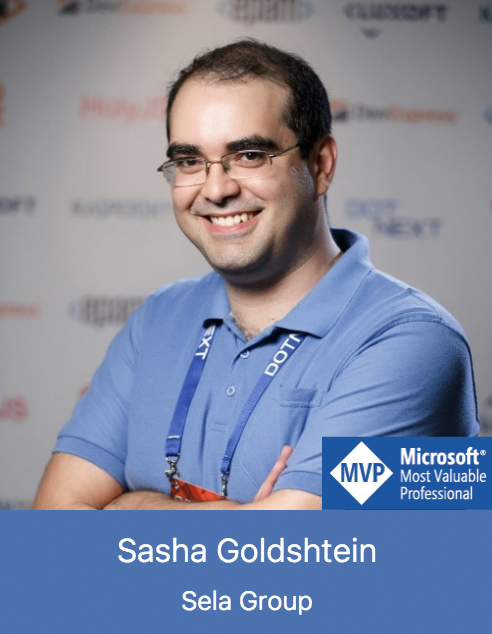
In addition to the new speakers, there will be well-known people. For example, Sasha Goldstein - the author of books , texts and posts , a regular speaker of DotNext and an infinite number of other conferences, and so on and so on, specializing in performance and debugging in the world of .NET and C ++ - will definitely come. With the choice of possible new reports he is also doing very well.
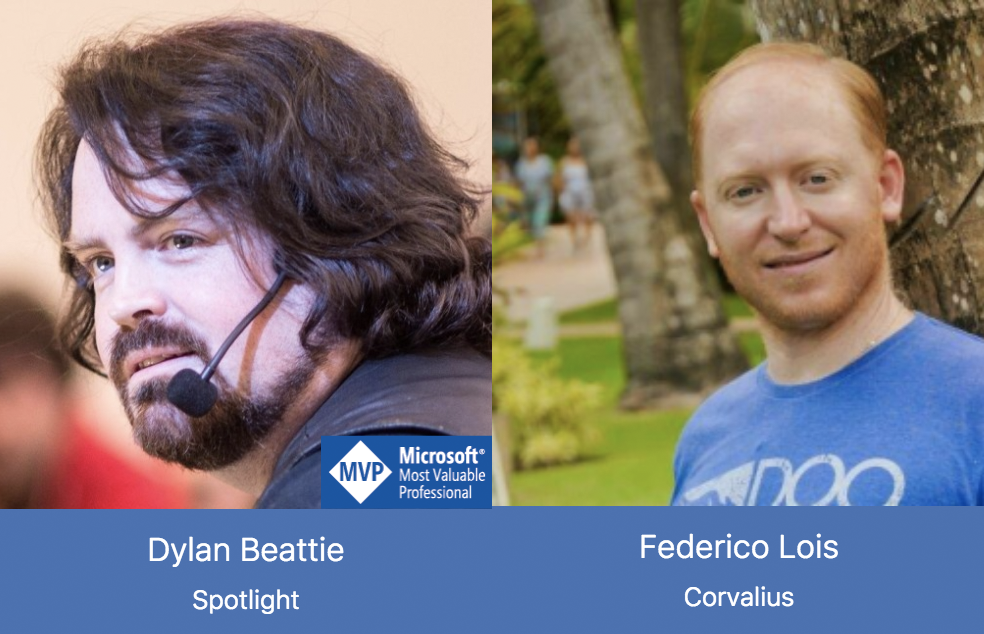
Will Dylan Beatty . In addition to playing the after-party DotNext guitar and wearing a huge black hat, Dylan was until recently known as a system architect at Spotlight, who develops huge distributed systems and designs perfectly beautiful APIs (and now has moved to SkillsMatter). Federico Lois will present the report “Scratched metal: Hardware intrisic at RavenDB ” - he will show how to work with hardware intrinsics, in parallel helping colleagues from Intel (or pinging them?) To implement the instructions we need for vNext.

We were able to persuade Andrei Akinshin to once again make a report. Last time he had a full house. Despite the fact that he had a keyout, and he did not become the leader in terms of working with the audience in the discussion area, the total number of forces he invested in the conference was shocking and terrifying. In addition, he participated in the Program Committee. After his speech, he was like everywhere at once and answered all questions at once. By the end of the second day, Andrew began to fade, and I was afraid that one day he would come out the door in an arbitrary direction and would not return. But no, severe tests make Andrew only stronger, and on DotNext 2018 Piter it will appear with a new portion of hardcore.
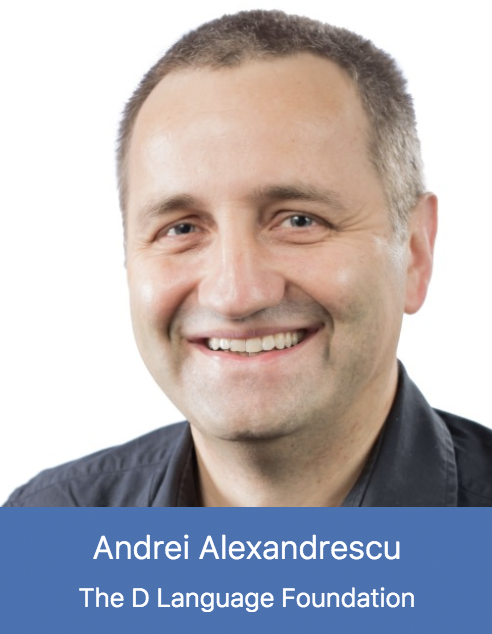
Well, for a snack, I want to talk about one of the most famous speakers. “The very same” Andrei Aleksandrescu will come to us - co-author of the D programming language , author of books and articles (including “Modern C ++ Design: Generic Programming and Design Patterns” , which once irreversibly influenced the thoughts of C ++ programmers around the world), an expert in a variety of related topics such as machine learning and natural language processing. Andrei will talk about modern challenges in the field of optimization and show concrete principles for the development of algorithms that can be applied daily in order to improve them (or sometimes, to completely redesign them). Benchmarking, concurrency, data connectivity, and so on - well, everything that is expected from Andrew. I will not spoil the content of the report in more detail, especially since, as DotNext 2018 Piter approaches, we are going to publish several more posts on Habré that reveal the program of the conference and the topics of the reports. There will be a separate interview with several speakers.
Already, it is obvious that the program DotNext 2018 Piter will be good. But if you want to make it even better - come with your own report. How to apply - written on the site .
See you at DotNext 2018 Piter!
')
Source: https://habr.com/ru/post/343812/
All Articles